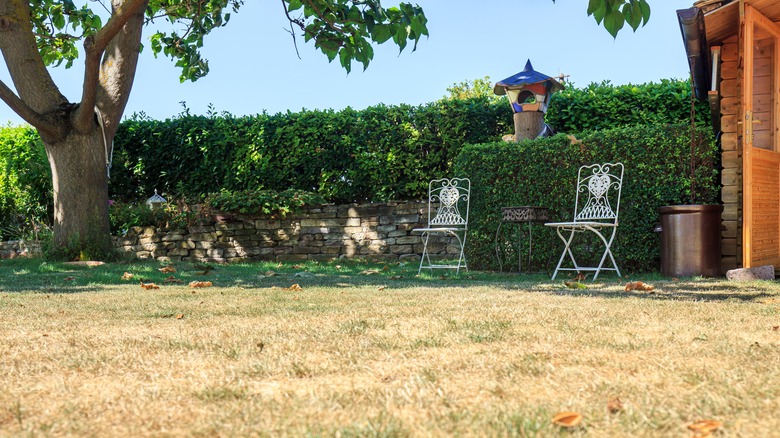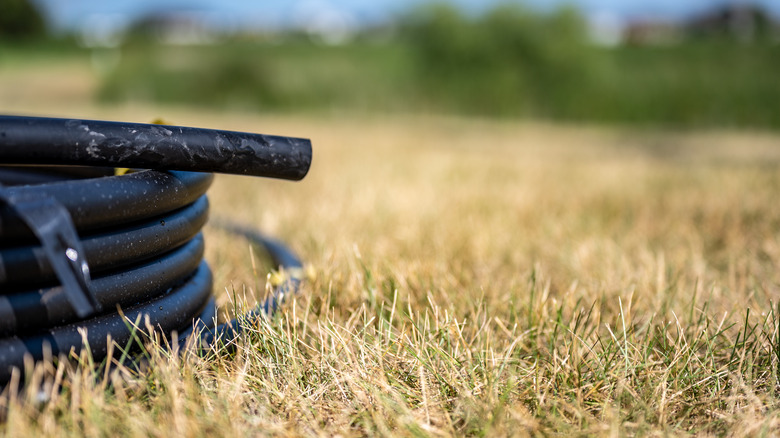How To Tell If Your Perennial Ryegrass Is Dead Or Dormant
Perennial ryegrass is widely used on lawns throughout the U.S. Being a cool-season grass species, it flourishes during the colder parts of the year. In some northern parts of the country, like the Pacific Northwest, it's used as a year-round turf. Meanwhile, homeowners in the south often rely on ryegrass to keep their lawns looking vibrant during winter, when warm-season species go dormant and fade. But perennial ryegrass doesn't stay green all year round. If you have this type of grass, you'll notice that it falls into dormancy during the hottest and driest months of the summer, when the air temperature climbs around 80-90 degrees Fahrenheit. This natural function helps nourish the crown instead of the blades. By channeling the available resources to the crown, the turf stays alive, even as the grass goes brown and lifeless. But how do you know if your lawn is actually dead or has simply gone dormant for the season?
All lawn that's dead typically looks consistently brown or yellow, while a dormant turf usually has some faded green patches. Now, looks alone aren't enough to help you diagnose the state of your perennial ryegrass lawn. However, there are several reliable ways to tell dormancy from death. The roots hold an important clue. As we mentioned above, dormant grass expands all available resources to keep the crown alive. So, if you pull on the grass and somewhat struggle to get it out of the soil, chances are the roots are alive and doing their jobs even as the grass hibernates. On the other hand, if the grass comes out without putting up a fight, the lawn is likely dead. Also, dormant crowns should have at least a bit of green color to them, even if it's not vibrant. Dead ones are yellow or brown, like the blades. Finally, if your region has no watering restrictions, try irrigating the lawn more often. Grass that's in a state of dormancy will regain its color after a while.
Maintenance tips for your dormant perennial ryegrass
A dormant ryegrass lawn is easy enough to maintain as long as you follow a few important dos and don'ts. Let's start with the don'ts. Firstly, don't subject the lawn to excessive traffic. Dormant grass is fragile, and even foot traffic can easily spell the difference between hibernation and death. Likewise, don't be tempted to aerate the lawn, even if the soil looks hard and compacted. Like traffic, this procedure will only disturb the grass while it's in a vulnerable state. Fertilization is also pointless. Dormant grass has no way to take in the nutrients, so don't waste your time feeding the lawn while it's waiting for cooler, wetter weather.
Now, there are a few things you should do to keep the dormant ryegrass lawn healthy. Crucially, you must continue watering. While the lawn does not need the same volumes of water as it does during its growing season, it still benefits from occasional irrigation. An inch of water every week should suffice. Consistent mowing is also a must, although you should increase the height to which you mow to about 4 inches. If you mow the grass any shorter than this, you risk damaging the roots. Before mowing, confirm whether the blades on your machine are sharp enough to make a clean cut — you don't want to pull on the grass and inadvertently harm its crown.

